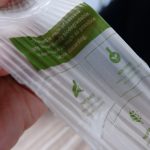If you’re an Amazon merchant, you need to meet their new packaging standards—or you could face a penalty.
On August 1, 2019, Amazon began requiring its merchants to meet a specific set of standards for environmentally friendly packaging. According to a recent article by Gary Forger in Modern Materials Handling, that was a game-changer.
When an entity the size of Amazon sets specific requirements for green packaging (and adds surcharges for non-compliance), it is sure to move the sustainability needle. The guidelines, as quoted in the article, say, “Amazon’s mission is to optimize the overall customer experience by collaborating with manufacturers worldwide to invent sustainable packaging that delights customers, eliminates waste, and ensures products arrive intact and undamaged.”
Sustainable concerns with regard to packaging are, of course, nothing new. Saving money in the supply chain by cutting shipping costs has been a priority for decades, and shipping savings are often synonymous with green solutions. For instance, simply right-sizing packages to eliminate excess volume and weight could eliminate millions of shipping truckloads, saving fuel and reducing greenhouse emissions.
Circularity is the word used by Dan Healey, Sustainability Director at Sealed Air, who is quoted in Forger’s article. Circularity, he says, describes the closed-loop life cycle of the materials and the package itself. Healey says it starts with how the materials are made and converted into a product. It includes use of the product for as long as possible until it reaches the end of its useful life and is recycled. Sealed Air has pledged to make its packaging solutions 100 percent recyclable or reusable by 2025.
One of Sealed Air’s more intriguing products is EcoPure, a plant-based polyethylene foam produced from sugar cane that can be used for protection in shipping. According to the article, it has the potential to yield a negative carbon footprint value because cultivation of sugar cane uses carbon dioxide and releases oxygen, offsetting the carbon emitted in production.
From the packaging of the individual items to the materials used to protect them in shipping and the containers in which they are shipped—every link in the supply chain must be sustainable. The right decisions can both reduce costs and help the environment, and Amazon is making sure that the effort is more widespread than ever.
You can read the article “Sustainable packaging is ready to make its mark” here.








